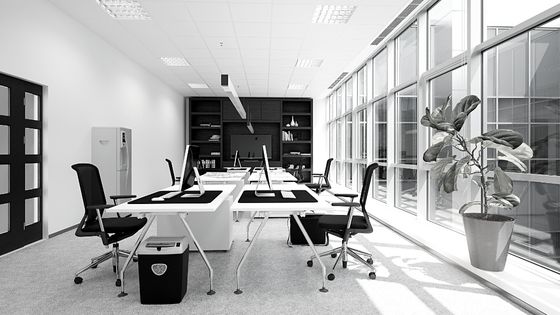Colour and lighting are often overlooked when it comes to office design, but they can play a significant role in improving productivity. Studies have shown that the right combination of colours and lighting can help employees feel more focused and energised, leading to better performance and greater productivity – which means you and your team can get more work done in less time!

Important of Colour
First, let’s talk about colour. The colours in your office can have a subtle but powerful effect on your mood and behaviour. Different colours can evoke different emotions and reactions, so it’s important to choose colours carefully.
For example, blue is often associated with calmness and focus, making it a great choice for an office environment. Green is also a good choice, as it is associated with growth and harmony. Both of these colours can help create a relaxing and productive atmosphere.
On the other hand, colours like red and yellow can be more stimulating and can even be overstimulating in large doses. They can be great for accents, but should be used sparingly in an office setting.
In addition to the colours on the walls, the colours of office supplies and furniture can also play a role in productivity. For example, using brightly coloured office supplies can help create a more positive and energizing atmosphere. Similarly, choosing furniture in calming colours can help create a more relaxing environment.
Getting Lighting Right
Now let’s talk about lighting. Proper lighting is crucial for productivity, as it can help improve focus and reduce eye strain. Natural light is the best option, as it can help regulate the body’s circadian rhythms and improve overall well-being. If natural light is not available, then it’s important to use artificial lighting that is as close to natural light as possible.
LED lights, commonly used in offices, are measured in Kelvins, with lower Kelvin ratings equating to warmer light colours, and higher Kelvin ratings relating to brighter colour temperatures. For office spaces, I recommend using LED globes which produce a bright crisp light and are rated between 4800 and 6500 Kelvins.
In addition to the overall lighting, task lighting is also important. This is the lighting that is specific to a certain task, such as a desk lamp for reading or a floor lamp for a seating area. Task lighting can help improve focus and reduce eye strain, leading to better productivity.
Overall, the right combination of colours and lighting can have a significant impact on productivity in the office. By choosing calming colours and providing plenty of natural light, you can create an environment that is conducive to focus and productivity. So the next time you’re thinking about office design, don’t forget about the power of colour and lighting.



















